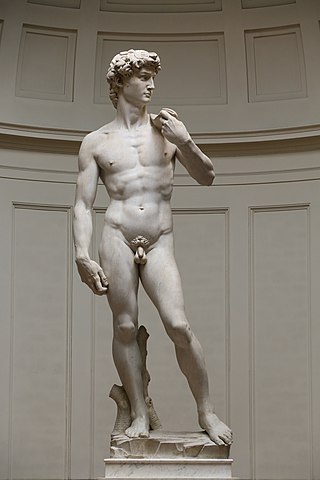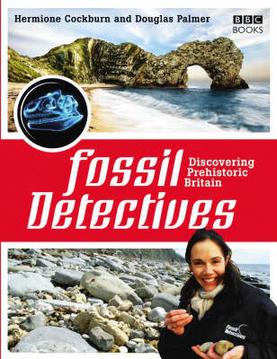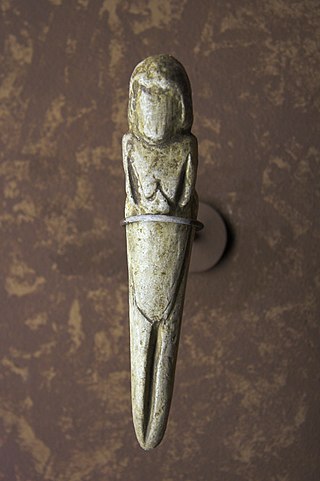Related Research Articles

The Venus de Milo is an ancient Greek sculpture that was created during the Hellenistic period, sometime between 150 and 125 BC. It is one of the most famous works of ancient Greek sculpture, having been prominently displayed at the Louvre Museum since shortly after the statue was rediscovered on the island of Milos, Greece, in 1820.

A supernormal stimulus or superstimulus is an exaggerated version of a stimulus to which there is an existing response tendency, or any stimulus that elicits a response more strongly than the stimulus for which it evolved.

Vilayanur Subramanian Ramachandran is an Indian-American neuroscientist. He is known for his wide-ranging experiments and theories in behavioral neurology, including the invention of the mirror box. Ramachandran is a distinguished professor in UCSD's Department of Psychology, where he is the director of the Center for Brain and Cognition.

The Venus of Willendorf is an 11.1-centimetre-tall (4.4 in) Venus figurine estimated to have been made around 25,000–30,000 years ago. It was found on August 7, 1908, by a workman named Johann Veran or Josef Veram during excavations conducted by archaeologists Josef Szombathy, Hugo Obermaier, and Josef Bayer at a Paleolithic site near Willendorf, a village in Lower Austria. It is carved from an oolitic limestone that is not local to the area, and tinted with red ochre. The figurine is now in the Natural History Museum in Vienna, Austria.

The Venus of Dolní Věstonice is a Venus figurine, a ceramic statuette of a nude female figure dated to 29,000–25,000 BCE. It was found at the Paleolithic site Dolní Věstonice in the Moravian basin south of Brno, in the base of Děvín Mountain in what is today the Czech Republic. This figurine and a few others from locations nearby are the oldest known ceramic articles in the world.

The Venus of Laussel is an 18.11-inch-high (46.0-centimetre) limestone bas-relief of a nude woman. It is painted with red ochre and was carved into the limestone of a rock shelter in the commune of Marquay, in the Dordogne department of south-western France. The carving is associated with the Gravettian Upper Paleolithic culture. It is currently displayed in the Musée d'Aquitaine in Bordeaux, France.

A Venus figurine is any Upper Palaeolithic statuette portraying a woman, usually carved in the round. Most have been unearthed in Europe, but others have been found as far away as Siberia, and distributed across much of Eurasia.

The Aphrodite of Knidos was an Ancient Greek sculpture of the goddess Aphrodite created by Praxiteles of Athens around the 4th century BC. It is one of the first life-sized representations of the nude female form in Greek history, displaying an alternative idea to male heroic nudity. Praxiteles' Aphrodite is shown nude, reaching for a bath towel while covering her pubis, which, in turn leaves her breasts exposed. Up until this point, Greek sculpture had been dominated by male nude figures. The original Greek sculpture is no longer in existence; however, many Roman copies survive of this influential work of art. Variants of the Venus Pudica are the Venus de' Medici and the Capitoline Venus.
Understanding is a documentary television series that aired from 1994 to 2004 on TLC. The program covered various things understood from a scientific perspective and was narrated by Jane Curtin, Candice Bergen, and Peter Coyote. It originally aired on TLC and as of 2013 is currently being shown on the Science Channel. The series is presented in a similar fashion to two other programs that also show on the Science Channel, Discover Magazine and Megascience.

Fertility in art refers to any artistic work representing or portraying fertility, which usually refers to successful breeding among humans, although it may also mean successful agriculture and animal husbandry. It includes engravings, drawings, paintings, sculptures, figurines, portraits and even literary works. In Paleolithic art, fertility is usually associated with figurines with exaggerated parts of human anatomy.

The nude, as a form of visual art that focuses on the unclothed human figure, is an enduring tradition in Western art. It was a preoccupation of Ancient Greek art, and after a semi-dormant period in the Middle Ages returned to a central position with the Renaissance. Unclothed figures often also play a part in other types of art, such as history painting, including allegorical and religious art, portraiture, or the decorative arts. From prehistory to the earliest civilizations, nude female figures are generally understood to be symbols of fertility or well-being.

Fossil Detectives is a 2008 BBC Television documentary series in which presenter Hermione Cockburn travels across Great Britain exploring fossil sites and discovering the latest scientific developments in geology and palaeontology. The show is a spin-off of Coast.

The Venus of Hohle Fels is an Upper Paleolithic Venus figurine made of mammoth ivory that was unearthed in 2008 in Hohle Fels, a cave near Schelklingen, Germany. It is dated to between 40,000 and 35,000 years ago, belonging to the early Aurignacian, at the very beginning of the Upper Paleolithic, which is associated with the earliest presence of Cro-Magnon in Europe.

The art of the Upper Paleolithic represents the oldest form of prehistoric art. Figurative art is present in Europe and Southeast Asia, beginning between about 40,000 to 35,000 years ago. Non-figurative cave paintings, consisting of hand stencils and simple geometric shapes, are somewhat older, at least 40,000 years old, and possibly as old as 64,000 years. This latter estimate is due to a controversial 2018 study based on uranium-thorium dating, which would imply Neanderthal authorship and qualify as art of the Middle Paleolithic.

Sexualization of the buttocks, especially of the female sex, has occurred throughout history.

The Venus figurines of Mal’ta are several palaeolithic female figurines of the Mal'ta–Buret' culture, found in Siberia, Russia.

Forces of Nature is a four-part television documentary series presented by physicist Brian Cox. The series was co-produced by BBC Studios, PBS and France Télévisions and originally aired in the United Kingdom weekly from 4 July 2016 at 21:00 on BBC One.

The Venus figurines of Gagarino are eight Palaeolithic Venus figurines made from ivory. The statuettes belong to the Gravettian industry and are about 21,000–20,000 years old. They were discovered near to the village of Gagarino in Lipetsk Oblast, Russia, and are now held in the Hermitage Museum in Saint Petersburg.

Braids are a complex hairstyle formed by interlacing three or more strands of hair. Braiding has been used to style and ornament human and animal hair for thousands of years in various cultures around the world.
References
- ↑ "How Art Made the World". BBC Science & Nature. Retrieved 12 June 2012.
- ↑ "How Art Made The World – part of a rich summer of arts on BBC Television". BBC Press Office. 31 March 2005. Retrieved 12 June 2012.
- ↑ "How Art Made the World: About the Series". PBS . Retrieved 12 June 2012.
- 1 2 "How Art Made the World: Programmes". BBC Science & Nature. Retrieved 12 June 2012.
- ↑ "How Art Made the World: More Human Than Human". PBS . Retrieved 12 June 2012.
- ↑ "The Venus of Willendorf: Exaggerated Beauty". PBS . Retrieved 12 June 2012.
- ↑ "V.S. Ramachandran: The Herring Gull Test". PBS . Retrieved 12 June 2012.
- ↑ "Egypt: Obsessive Order". PBS . Retrieved 12 June 2012.
- ↑ "Ancient Greece: Naked Perfection". PBS . Retrieved 12 June 2012.
- ↑ "How Art Made the World: The Day Pictures Were Born". PBS . Retrieved 16 June 2012.
- ↑ "How Art Made the World". BBC Shop. Retrieved 16 June 2012.
- ↑ "How Art Made the World: A Journey to the Origins of Art". BBC Shop. Retrieved 16 June 2012.